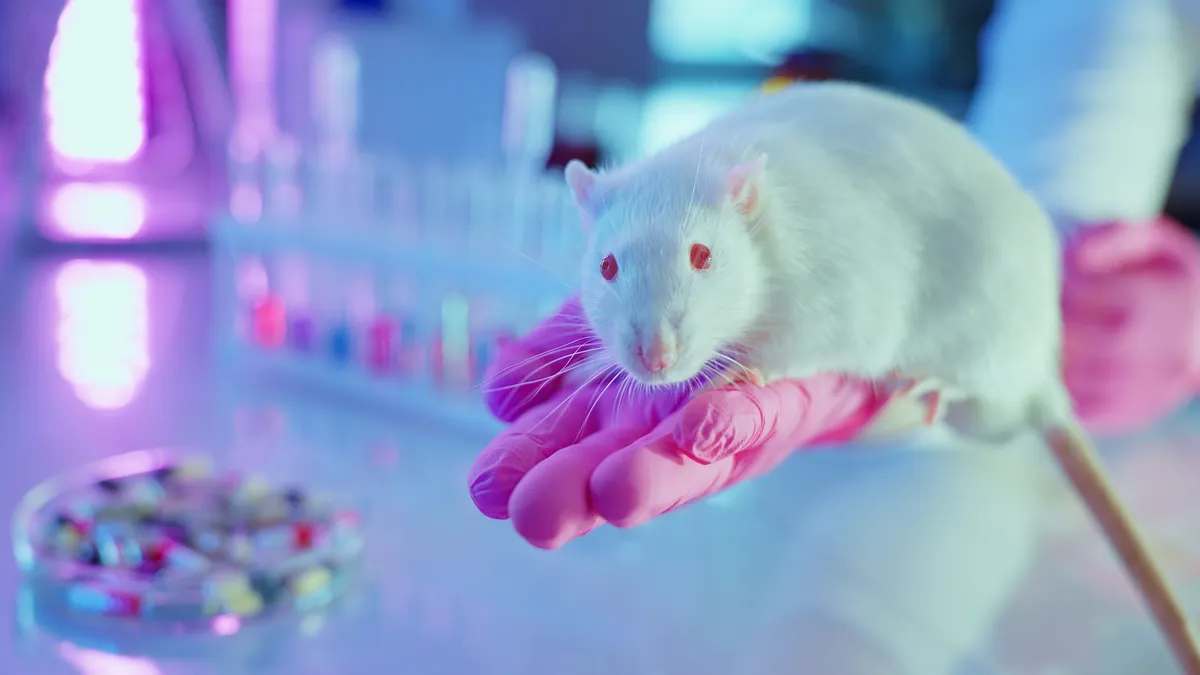Wh o w o u l d h a v e thought that in 10 short years, we would have gone from Dolly to Elsie? In February 1997, scientists in Scotland announced the birth of the world’s first successfully cloned mammal, Dolly the sheep. Dolly, which was created at the Roslin Institute in Edinburgh, was actually born on July 5, 1996, but her existence wasn’t announced until almost seven months later. Dolly, which was the first mammal to have been successfully cloned from an adult cell, was heralded as one of the most significant scientific breakthroughs of the decade. At the time, experts from the Roslin Institute were quoted as saying the technology would allow for the study of genetic diseases for which there is presently no cure and track down the mechanisms that are involved. Dolly incited sensational headlines, as well as sparked an ethical controversy that continues today. The science of cloning resurfaced in a big way last month and gave new meaning to the old catch phrase “Where’s the beef?” when it was reported that the Food and Drug Administration might allow meat and milk from cloned farm animals and their offspring to make their way toward supermarket shelves. Research into genetically altered foods is not limited to livestock. Recently, U.S. scientists claim to have created a carrot that provides extra calcium. A gene within the carrot has been altered that allows the cal cium within to cross more easily over the plant membranes. According to reports, researchers hope that adding the vegetable to a normal diet could help ward off conditions such as brittle bone disease and osteoporosis. This type of research might prompt consumers to query: “What’s Up Doc?” Just imagine what the patient education materials for uberfortified calcium carrots might look like. A study conducted by “Proceedings of the National Academy of Sciences” suggests that someone eating the new carrot could absorb 41% more calcium than if they ate the old. Safety trials on the super charged carrot are ongoing. “These carrots were grown in carefully monitored and controlled environments,” according to Professor Kendal Hirschi, part of the team at the Baylor College of Medicine in Texas. “Much more research needs to be conducted before this would be available to consumers.” But the scientists nonetheless hope their carrot could ultimately offer a health ier way of consuming sufficient quantities of the mineral. Carrots are just the latest vegetable to undergo genetic alterations. Corn has been a laboratory staple for years. While the health benefits of genetically altered food stuffs undergo scientific scrutiny, ultimately it will be consumers who probably will have the final word. Organic movements are swelling and there’s no doubt au natural will take on a new meaning in the coming years. A yet to be seen byproduct of raising the public’s awareness around genetics is in the area of gene therapy. While hun dreds of treatments that involve the administration of DNA to treat many dif ferent diseases are currently being investi gated as gene therapy candidates, the Food and Drug Administration has yet to approve any human gene therapy prod ucts. In fact, only one such product has been approved in any country, China, and that product is Gendicine, for the treat ment of head and neck squamous cell car cinoma. (See related article on page 18.) It will be interesting to see what impact genetically altered foods have on the acceptance of likescience medicines. Taren Grom Editor Science is catching up with the stockyards and vegetable gardens.Where will genetics and cloning take us? Hopefully, to a better therapeutic place. Taren Grom Unleashing the gene W PUBLISHER Lisa Banket EDITOR Taren Grom CREATIVE DIRECTOR Marah Walsh MANAGING EDITOR Denise Myshko SENIOR EDITORS Robin Robinson Elisabeth Pena Villarroel FEATURES EDITOR Kim Ribbink CONTRIBUTING EDITORS Cynthia Borda Carolyn Gretton DESIGN ASSOCIATE Cathy Liszewski NATIONAL ACCOUNT MANAGER Cathy Tracy CIRCULATION ASSISTANT Robert Harrison Copyright 2008 by PharmaLinx LLC, Titusville, NJ Printed in the U.S.A. Volume Eight, Number Two PharmaVOICE (ISSN: 1932961X) is published monthly except August and December, by PharmaLinx LLC, P.O. Box 327, Titusville, NJ 08560. Periodicals postage paid at Titusville, NJ 08560 and additional mailing offices. Postmaster: Send address changes to PharmaVOICE, P.O. Box 292345, Kettering, OH 454290345. PharmaVOICE Coverage and Distribution: Domestic subscriptions are available at $190 for one year (10 issues). Foreign subscriptions: 10 issues US$360. Contact PharmaVOICE at P.O. Box 327, Titusville, NJ 08560. Call us at 609.730.0196 or FAX your order to 609.730.0197. Contributions: PharmaVOICE is not responsible for unsolicited contributions of any type. Unless otherwise agreed in writing, PharmaVOICE retains all rights on material published in PharmaVOICE for a period of six months after publication and reprint rights after that period expires. Email: tgrom@pharmavoice.com. Change of address: Please allow six weeks for a change of address. Send your new address along with your sub scription label to PharmaVOICE, P.O. Box 292345, Kettering, OH 454290345. Call us at 800.607.4410 or FAX your change to 937.890.0221. Email: mwalsh@pharmavoice.com. IMPORTANT NOTICE: The post office will not forward copies of this magazine. PharmaVOICE is not respon sible for replacing undelivered copies due to lack of or late notification of address change. Advertising in PharmaVOICE: To advertise in Pharma VOICE please contact our Advertising Department at P.O. Box 327, Titusville, NJ 08560, or telephone us at 609.730.0196. Email: lbanket@pharmavoice.com. THE FORUM FOR THE INDUSTRY EXECUTIVE Volume 8 . Number 2 Send your letters to feedback@pharma voice.com. Please include your name, title, company, and business phone number. Letters chosen for publication may be edited for length and clarity. All submissions become the property of PharmaLinx LLC. Letters LETTER from the editor 3 PharmaVOICE F e b r u a r y 2 008 0208issue PROOFs 1/23/08 9:39 AM Page 3
An article from











